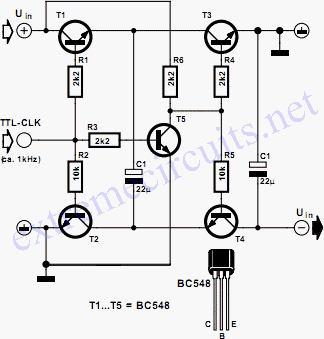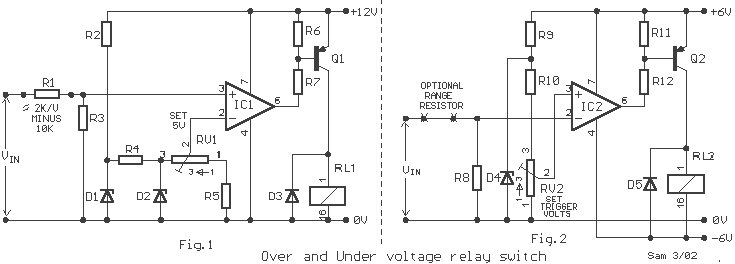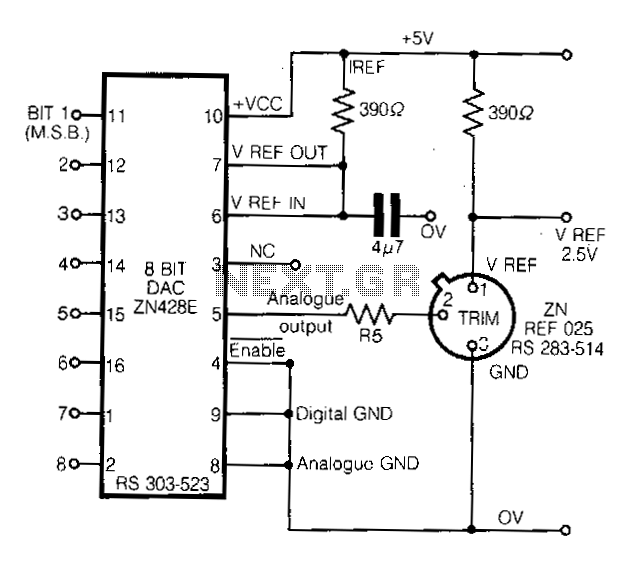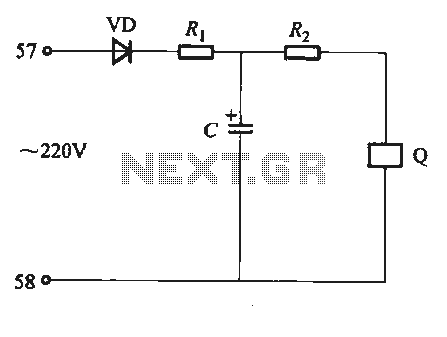
frequency to voltage convertor

Converter circuits are commonly utilized in various applications, and there are several types available. A simple frequency-to-voltage converter circuit uses the IC LM331, which is essentially a precision voltage-to-frequency converter. This IC has numerous applications, and in this instance, it is employed as a straightforward frequency-to-voltage converter. The operation of this circuit involves differentiating the input frequency using Capacitor C3 and Resistor R7, with the resulting frequency fed to pin 6 of the IC, which serves as the threshold input. The negative-going edge of the resultant pulse train at pin 6 triggers the built-in comparator circuit, activating the internal timer circuit. Pin 2 is designated as the reference input to the internal comparator and is connected to R6 for calibration purposes. At any given moment, the output current is proportional to the input frequency and the values of the timing components (C1 and R1). Consequently, the output voltage (Vout) is proportional to the input frequency, effectively converting frequency to voltage.
The LM331 integrated circuit serves as a versatile component in frequency-to-voltage conversion applications. In this configuration, the circuit is designed to convert an input frequency signal into a corresponding output voltage level. The differentiation process is crucial, as it allows the circuit to detect changes in frequency effectively. Capacitor C3 and Resistor R7 form a differentiator that creates sharp transitions in the input signal, which are then processed by the LM331.
The IC's internal comparator plays a pivotal role in this circuit by responding to the negative-going edges of the pulse train at pin 6. This action initiates the timing sequence within the LM331, which is essential for generating a stable output voltage. The reference input at pin 2, connected to the calibration resistor R6, allows for fine-tuning of the circuit's response, ensuring accurate conversion across a range of input frequencies.
The timing components, C1 and R1, are integral to determining the output characteristics of the circuit. The values of these components directly influence the relationship between the input frequency and the output voltage. As the input frequency varies, the resulting output voltage reflects these changes, allowing for precise frequency measurement and conversion.
This circuit finds applications in various fields, including signal processing, instrumentation, and control systems, where converting frequency signals into corresponding voltage levels is essential for further analysis or control.Convertor circuits are widely used in all places and there are several types in it. Here is a simple Frequency to Voltage convertor circuit uses a IC LM331 which is basically a precision voltage to frequency convertor. This IC has lot of applications with it here we are about to use it as a simple frequency to voltage convertor.
Lets see how this c ircuit works. In this circuit the frequency conversion was attained by differentiating the input frequency by using Capacitor C3 and Resistor R7 and feeding the resultant frequency to the pin6 of the IC which was the threshold of the IC(refer the below pin diagram). The negative going edge of the resultant pulse train at pin 6 makes the built in comparator circuit to trigger the timer circuit inbuild within it.
As you can see that pin 2 was given as the reference input to the internal comparator so the pin was connected to the R6 and it was used for calibration. At any time instant the output current will be proportional to the input frequency and value of the timing components( C1 and R1).
As a reslt voltage Vout is proportional to the input frequency. Thus by this way the frequency is converted to voltage. The output voltage depends on the equation Share this circuit with others through social networks if you like it. Post your comment and queries regarding this article, we are happy to help you. Thank you for visiting us and Enjoy Electronics. 🔗 External reference
The LM331 integrated circuit serves as a versatile component in frequency-to-voltage conversion applications. In this configuration, the circuit is designed to convert an input frequency signal into a corresponding output voltage level. The differentiation process is crucial, as it allows the circuit to detect changes in frequency effectively. Capacitor C3 and Resistor R7 form a differentiator that creates sharp transitions in the input signal, which are then processed by the LM331.
The IC's internal comparator plays a pivotal role in this circuit by responding to the negative-going edges of the pulse train at pin 6. This action initiates the timing sequence within the LM331, which is essential for generating a stable output voltage. The reference input at pin 2, connected to the calibration resistor R6, allows for fine-tuning of the circuit's response, ensuring accurate conversion across a range of input frequencies.
The timing components, C1 and R1, are integral to determining the output characteristics of the circuit. The values of these components directly influence the relationship between the input frequency and the output voltage. As the input frequency varies, the resulting output voltage reflects these changes, allowing for precise frequency measurement and conversion.
This circuit finds applications in various fields, including signal processing, instrumentation, and control systems, where converting frequency signals into corresponding voltage levels is essential for further analysis or control.Convertor circuits are widely used in all places and there are several types in it. Here is a simple Frequency to Voltage convertor circuit uses a IC LM331 which is basically a precision voltage to frequency convertor. This IC has lot of applications with it here we are about to use it as a simple frequency to voltage convertor.
Lets see how this c ircuit works. In this circuit the frequency conversion was attained by differentiating the input frequency by using Capacitor C3 and Resistor R7 and feeding the resultant frequency to the pin6 of the IC which was the threshold of the IC(refer the below pin diagram). The negative going edge of the resultant pulse train at pin 6 makes the built in comparator circuit to trigger the timer circuit inbuild within it.
As you can see that pin 2 was given as the reference input to the internal comparator so the pin was connected to the R6 and it was used for calibration. At any time instant the output current will be proportional to the input frequency and value of the timing components( C1 and R1).
As a reslt voltage Vout is proportional to the input frequency. Thus by this way the frequency is converted to voltage. The output voltage depends on the equation Share this circuit with others through social networks if you like it. Post your comment and queries regarding this article, we are happy to help you. Thank you for visiting us and Enjoy Electronics. 🔗 External reference





